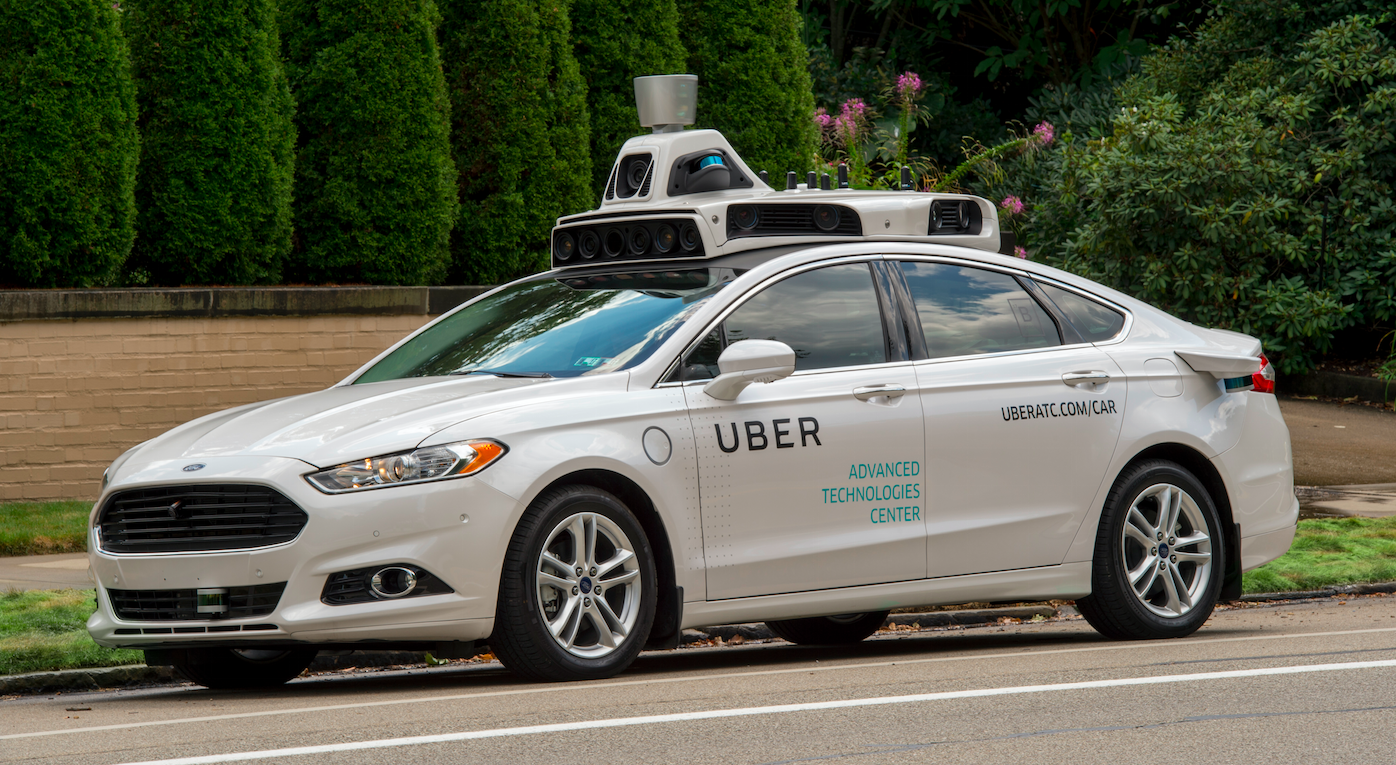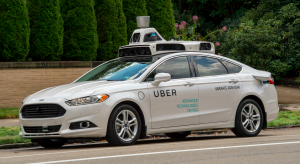By Sasha Ramani, MPP 2018
Self-driving cars have the potential to save thousands of lives, and a friendly regulatory atmosphere can encourage innovation into this burgeoning field. However, they may struggle to be adopted by a skeptical public.
Picture: One of Uber’s autonomous Ford Fusions cruising the streets of Pittsburgh. Soon to be joined by 100 Volvos. Photo credit: Uber.
On Monday September 19th, US authorities officially gave their support to self-driving cars.
Jeffrey Zients, director of the National Economic Council, and Anthony Foxx, secretary of the Department of Transportation (DOT), released Federal guidelines for safety standards and uniform regulation. The standards describe how cars should react if their technology fails, methods to protect passenger privacy, and how passengers are to be protected if an accident were to occur. They also encompass some strategic ambiguity in order to avoid squashing innovation in a nascent industry.
“We envision in the future, you can take your hands off the wheel, and your commute becomes restful or productive instead of frustrating and exhausting,” said Zients. He added that autonomous vehicles “will save time, money, and lives.”
“What we are trying to do is avoid a patchwork of state laws,” noted Fox, referencing that before the announcement, rules for autonomous vehicles had varied across states and municipalities.
On the same day as the announcement, President Obama published an editorial about self-driving cars in The Pittsburgh Post-Gazette. Obama claimed that the technology could save tens of thousands a lives each year and that the new policy was “flexible and designed to evolve with new advances.”
Last year saw 40,000 auto-related fatalities in the United States, and 1.25 million globally. Regulators hope that autonomous vehicles would help to significantly reduce this toll.
US investment into automated vehicles has been dominated by Silicon Valley giants and auto manufacturers, with the federal government contributing $4 billion over 10 years. Ford, which is targeting to have fully-autonomous vehicles by 2021, claimed that the new guidelines will “help establish the basis for a national framework that enables the safe deployment of autonomous vehicles.” A trade association that represents Google, Uber, and Lyft also hailed the new guidelines.
Federal support may also help US-based firms compete with overseas rivals. In August, Singapore-based nuTonomy, which is founded by two researchers from MIT, began testing a free ride-hailing service in a district of Singapore. Chinese internet firm Baidu is also testing self-driving cars.
The rapid pace of innovation and deployment of self-driving cars has forced regulators to scramble to keep up, as unclear rules about legality and accident liability have caused uncertainty within the industry. Tens of thousands of Tesla vehicles, equipped with a semi-autonomous autopilot feature, are already on the roads. One such vehicle was involved in an accident in May.
The week before the announcement, Uber had begun testing autonomous vehicles on the streets of Pittsburgh, and expects to have 100 self-driving Volvos on the streets by the end of the year. Two Uber employees sit in the front of the car, monitoring its performance and ready to take control if required.
Uber views self-driving technology as an existential threat. Last year, it acquired Carnegie Mellon University’s robotics for its research talent. And because the technology is highly contingent on maps, Uber is developing its own mapping platform to unburden itself from having to rely on Google, which is also developing a fleet of automated vehicles.
Auto manufacturers face greater challenges. Not only do they lack the benefits of Uber’s infrastructure and network effect, but Barclays predicts that wide use of autonomous vehicles could cause auto sales to fall by up to 40%. David Eaves, Kennedy School lecturer and expert in information technology and government, suggests that “car companies should collectively create an open-source mapping consortium to compete with an open standard against Uber.”
Pittsburgh has served as an ideal laboratory for Uber’s self-driving research. Aside from the local talent of CMU, the city offers challenges such as a winding road system, extreme weather, and paralyzing traffic. Raffi Krikorian, head of Uber’s Pittsburgh research center, calls the city the “double-black diamond of driving,” suggesting that success in Pittsburgh would mean that the technology is ready for national use.
Pittsburgh also boasts a friendly regulatory atmosphere. Its mayor, Bill Peduto, has long been an advocate for ride-sharing, and believes that government must take risks and act like a startup. “Regulation will never be ahead of innovation,” he claims. “If you sit and wait, the innovation will happen, but somewhere else.”
Others, however, are less convinced. Auto-safety watchdog Joan Claybrook claims “There’s tremendous skepticism still today about driverless cars. Computers break down.”
“The capabilities of these systems are much less than people may think,” said Jake Fisher, director of auto testing at Consumer Reports magazine. “The most difficult thing for a self-driving vehicle to do is to deal with humans, because humans are unpredictable.” Autonomous vehicles also have challenges in snow and fog, and fail to comprehend social cues such as nods and hand gestures.
Persuading consumers to purchase self-driving cars won’t be easy either. According to a July survey conducted by Altman Vilandrie & Co, a Boston-based consultancy, two-thirds of US-based consumers believe that self-driving cars are dangerous. More than half would refuse to ride in one.
The result is that “autonomous vehicles have to prove their mettle”, as claimed by Raj Rajkumar, co-director of the General Motors-Carnegie Mellon Autonomous Driving Collaborative Research Lab in Pittsburgh. “Behind the wheel, we are only human and we are expected to screw up. But there will come a point in time where [humans] should not be allowed to drive.”

